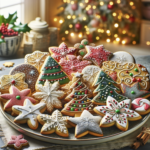The Jewish Holiday of Rosh Hashanah
Rosh Hashanah 2011: Wednesday, September 28
(begins at sundown)
The Jewish Holiday of Rosh Hashanah is widely known and celebrated as the New Years Day of the Jewish calendar, but actually Rosh Hashanah has a fourfold meaning – It is the Jewish New Year, the Day of Judgment, the Day of Remembrance, and the Day of Shofar Blowing.
- It is the Day of Judgment
As Jews worldwide examine their past deeds and asks for forgiveness for their sins
- It is the Day of Shofar Blowing
As the Shofar (the rams horn) is blown in temple to herald the beginning of the 10 day period known as the High Holy Days
- It is the Day of Remembrance
As Jews review the history of their people and pray for Israel
- And of course it is New Year’s Day
Celebrated with it’s holiday greeting cards, special prayers, and festive and sweet foods (to ensure sweetness in the New Year)
Rosh Hashanah is observed the first and second day of the seventh month of the Jewish calender, Tishri. Coming in the Fall season of the western calendar, usually in September.
In Israel Rosh Hashanah is the only holiday kept for 2 days as it is considered too important to be observed for only 24 hours. Both days are considered one long day of 48 hours.
The traditions of Rosh Hashanah are simple as the only commandment specified for the holiday is the blowing of the shofar. In temple the shofar is blown on Rosh Hashanah to herald the beginning of the period known as the High Holy Days.
It is believed that on Rosh Hashanah the destiny of all mankind is recorded byG-d in the Book of Life. After Rosh Hashanah services, as the congregants leave the synagogue they say to each other…
“May you be inscribed in the Book of Life”
On the first day of Rosh Hashanah, after the afternoon services, Jews visit a body of water or pond, containing live fish*, to symbolically “cast away” their sins into the river.
*The fish’s dependence on water symbolizes the Jews dependence on G-d, as a fish’s eyes never close, G-d’s watchful eyes never cease.
On Rosh Hashanah it is customary for families to gather together for the holiday meal. Traditional foods sweetened with honey, apples and carrots are served, symbolizing sweetness, blessings, abundance and the hope for a sweet year ahead.
The first night’s meal begins with apple dipped in honey. Challah, the bread usually eaten on the Sabbath (not braided as at regular meals but instead baked in a circle – a wish that the coming year will roll around smoothly without unhappiness or sorrow) is also dipped in honey before eating.



